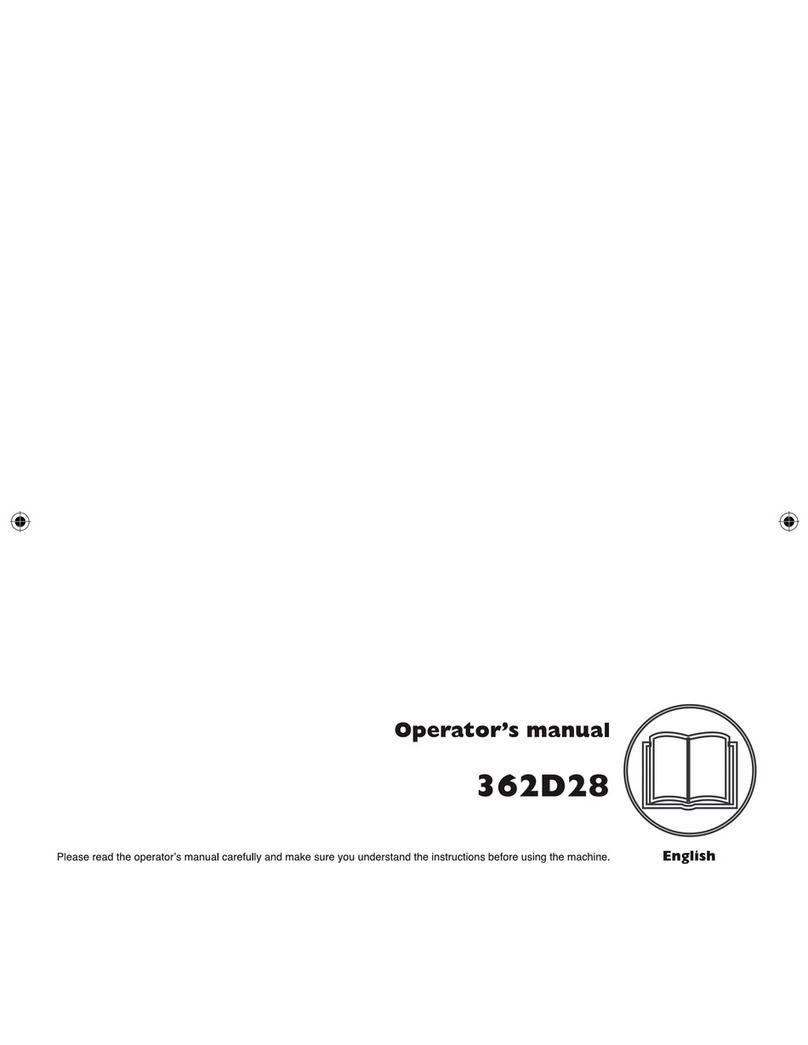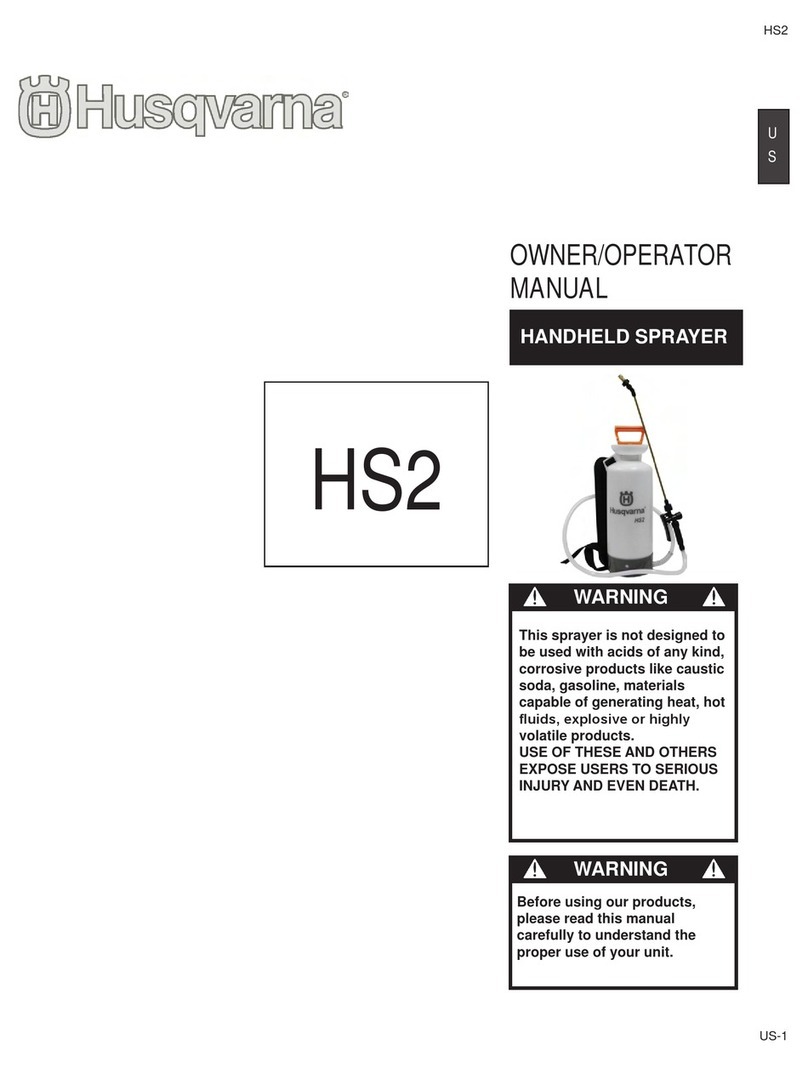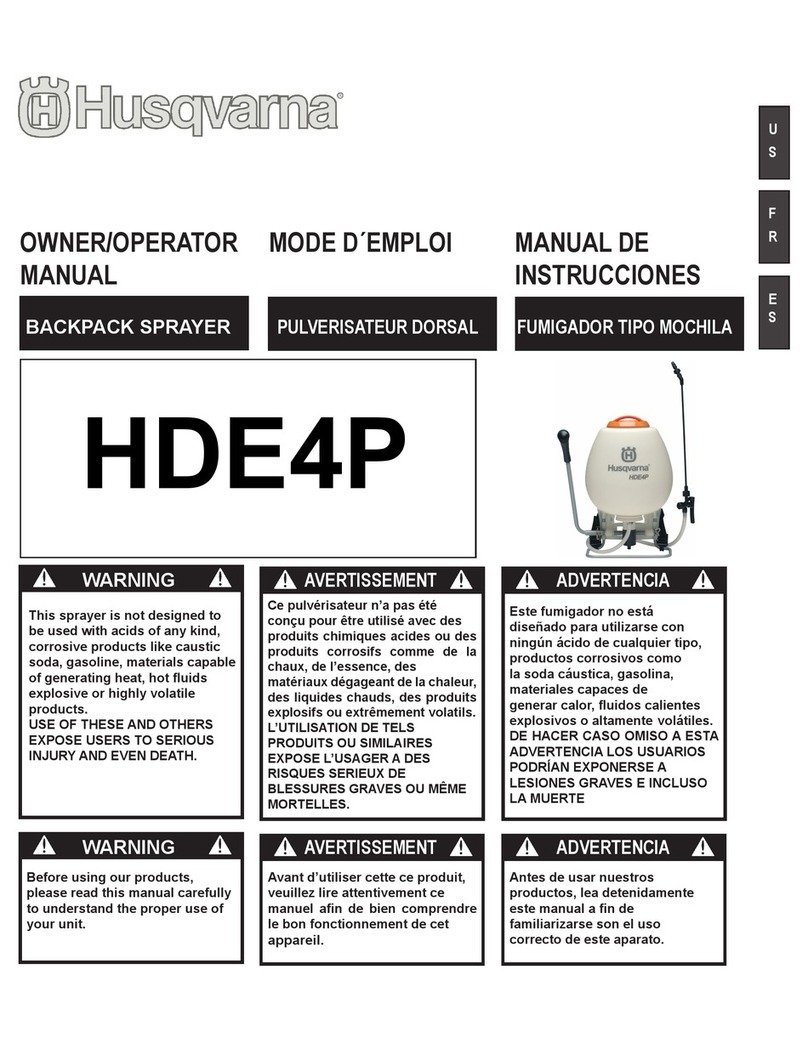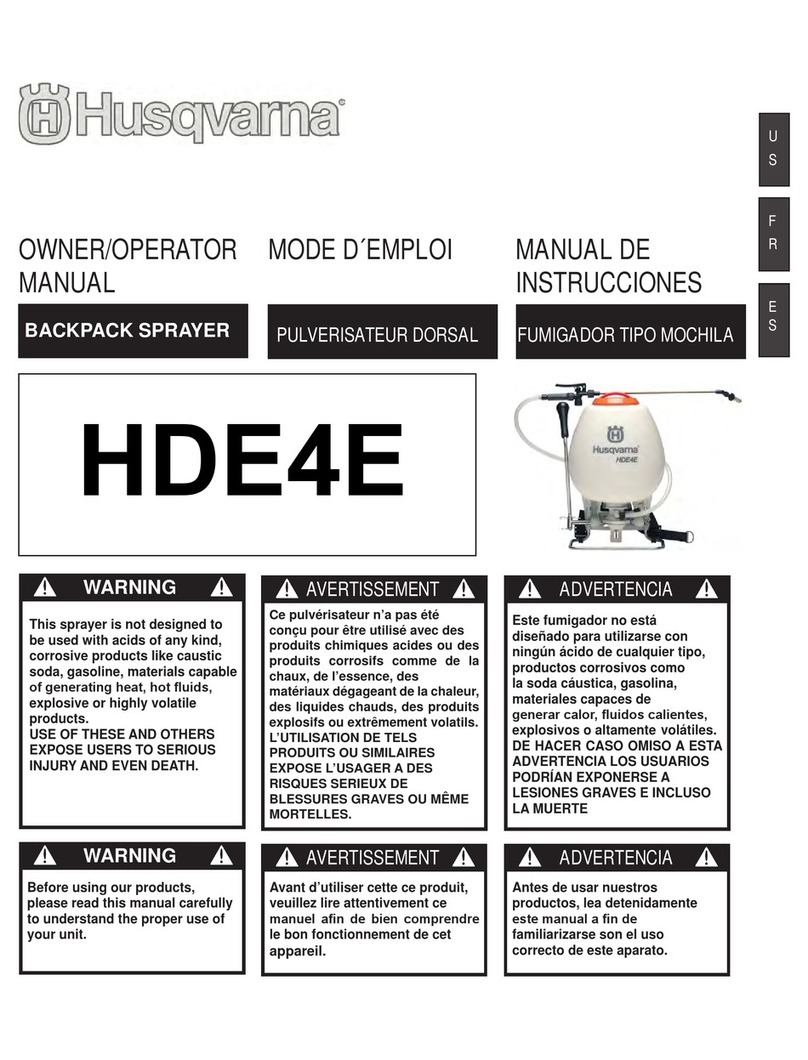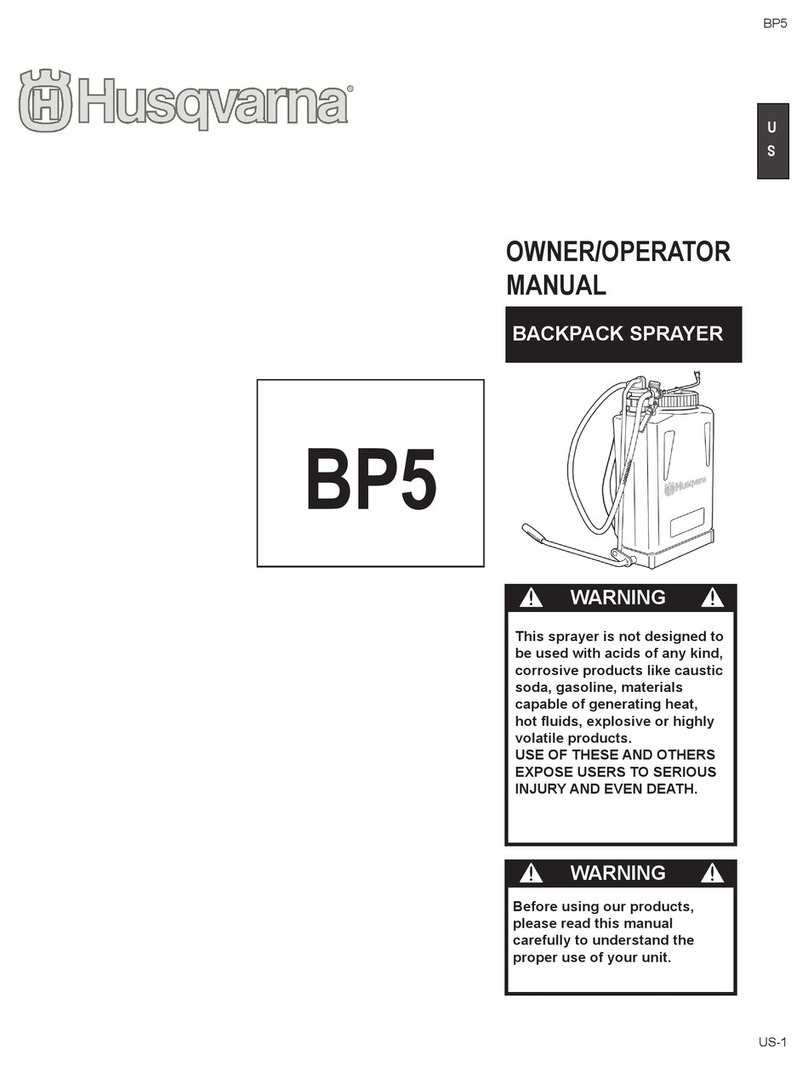321S15/25
GB-8
• When starting work, please pay all due consideration
to the spraying time, wind direction, etc., to ensure that
no noise disturbance or chemical hazard is caused to
nearby residents, passers-by, farm crops, and so on.
• While spraying please hold the grip •rmly at all times
and be careful not to point the nozzle in the direction
of people or animals.
• While spraying please be careful of the wind direction
and always stand on the upwind side, to avoid spraying
yourself with chemicals.
• Should you begin to feel even slightly unwell while
spraying, consult a doctor immediately. When doing
so, inform the doctor of the name of the chemical you
were using, the conditions of use, etc.
• If the sprayer is tilted the chemical may leak out
through the air holes in the cap. When spraying always
make sure you have a •rm footing and maintain your
balance.
• Do not touch the spark plug or plug cords while the
engine is running, as you may get an electric shock.
• Do not touch the muf!er, spark plug, or other metal
parts with your bare hands while the engine is running
or immediately after stopping the engine, as there is
the risk of burns due to high temperatures.
Precautions after spraying
• Please seal unused chemicals and store them out of
the reach of children.
• Do not simply discard empty chemical containers,
but dispose of them safely by incinerating, burying, or
another similar method. In addition, please take every
care that the water used to clean spraying tools does
not create any hazard.
• Fully inspect and maintain protective clothing, masks,
gloves, and other protective gear in preparation for
the next session.
• After completing the work and tidying away chemicals
and spraying tools, you should immediately take a bath
or wash your hands, feet, face, etc. thoroughly with
soap, as well as washing your mouth out.
• You should change all clothes worn, including under-
wear, and wash them thoroughly. Clothes worn during
spraying should not be worn again the following day.
• After spraying, please limit your alcohol intake and
rest thoroughly by going to bed early. If you feel even
slightly unwell, please see a doctor as soon as pos-
sible.
Other precautions
• When engaged in spraying work over a protracted pe-
riod of time, please have your health checked regularly.
• Please carry out spraying in a planned fashion, keep-
ing a daily record of the date and time of spraying, the
chemicals used, the target pest, contents of the work,
duration of the work, and other details.
• Please keep the following points in mind when select-
ing or using protective gear.
A. Protective clothing. Choose clothing that is cool to
wear and offers good ventilation and waterproo•ng.
In addition, wear items that enable you to carry out
spraying work in total comfort and safety.
B. Spraying hood. Use a hood with a brim that is water-
proof and covers your neck and shoulders.
C. Gloves. Use gloves that are dif•cult for chemicals to
penetrate and do not slip even if you perspire while
doing the work.
D. Rubber apron. When mixing chemicals, wear a long,
thick, and wide apron that cannot be penetrated by
chemical splashes.
E. Protective goggles, mask, etc. Select suitable protec-
tive goggles, mask, rubber boots, eye washer, and
protective cream, etc., paying attention to standards
and the recommendations of farm work safety promo-
tion organizations.
Maintenance precautions
• In order to maintain the functions of the product,
regularly carry out the maintenance inspections listed
in this Manual. When maintenance or parts replace-
ment not indicated in this Manual are required, please
consult your product supplier or nearest Husqvarna
product dealer.
• Never keep the engine running while carrying out
inspections or maintenance.
• Do not modify the sprayer or dismantle the engine.
This could lead to breakdown and serious accidents
during operation.
• Do not touch the muf!er or spark plug with your bare
hands immediately after stopping the engine. There is
the risk of burns due to high temperature.
• For replacement parts, please use original Husqvarna
parts or brands designated by Husqvarna .
Maintenance of labels
1. Please keep warning labels clean and unmarked.
2. If warning labels become soiled or peel off, please
order from your supplier and replace with new ones.
3. When af•xing new labels please wipe off all dirt and
moisture.

